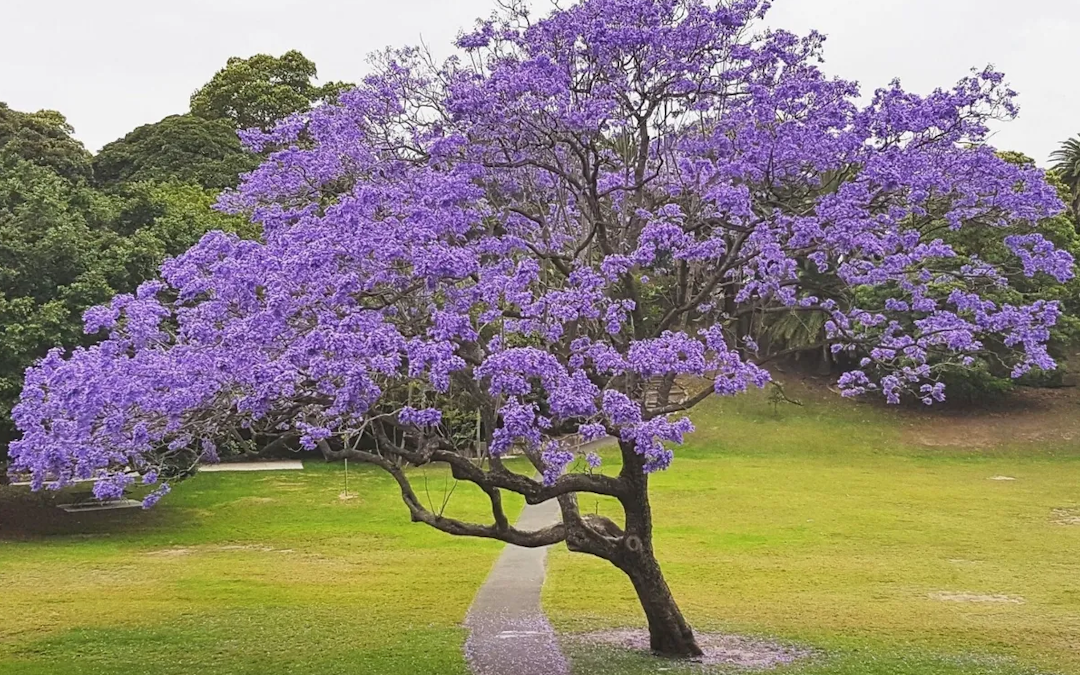Discover the Perfect Jacaranda for Your Landscape
Transform Your Garden with the Right Jacaranda
Explore the varieties of Jacaranda trees that best suit your climate and aesthetic needs. Learn how to choose, plant, and care for these stunning trees to enhance your outdoor space.
Choosing the Right Jacaranda
Why Jacaranda Selection Matters
Selecting the appropriate Jacaranda variety is crucial for ensuring the tree thrives in your specific climate and landscape. Jacarandas can serve multiple purposes, from providing ornamental beauty with their vibrant purple-blue flowers to offering ample shade. Understanding your primary goal, whether it’s aesthetic appeal, shade, or both, will guide you in making the best choice for your garden.
Jacarandas are not only admired for their stunning visual appeal but also for their practical benefits. They can significantly enhance the beauty of your garden while providing a cool, shaded area. By choosing the right variety, you ensure that the tree will flourish and meet your specific needs, whether you are looking to create a picturesque landscape or a functional outdoor space.

Step 1
Step 1: Determine Your Purpose
Decide whether you want a Jacaranda tree primarily for its ornamental value, shade, or both. This will influence the variety you choose and how you care for it.
Step 2
Step 2: Assess Climate Suitability
Jacaranda trees thrive in warm, temperate to tropical climates. Ensure your environment is frost-free and receives plenty of sunlight to support healthy growth.
Step 3
Step 3: Understand Growth Habit
Jacarandas typically grow as medium to large-sized trees, reaching heights of 25-50 feet with a spread of 30-40 feet. Their feathery foliage and stunning flowers make them a standout feature in any landscape.
Step 4
Step 4: Consider Planting Requirements
Choose a sunny location with well-drained soil. Prepare the soil by testing its pH, removing debris, and enriching it with compost if needed. Plant Jacarandas in late spring or early summer, spacing them 20-30 feet apart to allow for adequate growth and air circulation.
Site Selection
Choose a sunny location with well-drained soil. Jacaranda trees thrive in sandy, loamy soils but can adapt to various soil types.
Soil Preparation
Test the soil pH to ensure it falls between 6.5 and 7.5. Remove any rocks and debris, and enrich the soil with compost and organic matter if necessary.
Planting Time
Plant Jacaranda trees in late spring or early summer when the soil has warmed up to encourage healthy root development.
Spacing
Space the trees 20-30 feet apart to allow for adequate growth and air circulation, preventing overcrowding and promoting healthy development.
Step 1
Watering
Water young trees regularly to establish roots, then reduce frequency as the tree matures. Established Jacaranda trees are drought-tolerant and require minimal watering.
Step 2
Mulching
Apply a 2-3 inch layer of organic mulch, such as wood chips or leaves, around the base of the tree to retain moisture and suppress weeds.
Step 3
Fertilizing
Use a balanced organic fertilizer before planting. Apply a slow-release fertilizer in early spring to support growth and flowering.
Step 4
Pruning
Prune young trees to shape them and remove any damaged or diseased branches. Minimal pruning is needed once the tree is established.
Harvesting Jacaranda Seeds
Collecting Jacaranda seeds for propagation or other uses involves careful timing and method.
1
Timing
Harvest seeds in late summer to early autumn when seed pods have matured and dried on the tree.
2
Method
Collect seed pods from the tree and allow them to dry further if needed. Extract seeds from the pods and store them in a cool, dry place for future planting.
3
Storage
Store seeds in a paper envelope or cloth bag in a cool, dry place. Properly stored seeds can remain viable for several years.
Post-Harvest Care of Jacaranda Seeds
Seed Storage
Store Jacaranda seeds in a paper envelope or cloth bag. Ensure the storage area is cool and dry to maintain seed viability.
Long-Term Preservation
For extended storage, place seeds in airtight containers and keep them in the refrigerator. This helps preserve their germination potential for several years.
Handling Seeds
Handle seeds with care to avoid damage. Use clean, dry hands or tools when transferring seeds to storage containers.
Step 1
Benefits of Jacaranda Trees
Jacaranda trees provide ample shade, reducing energy costs by cooling the surroundings. Their roots improve soil structure and prevent erosion.
Step 2
Aesthetic and Practical Benefits
Known for their stunning purple-blue flowers, Jacaranda trees add significant ornamental value to landscapes. They also attract pollinators, supporting local biodiversity.
Step 3
Cultural and Community Benefits
Jacaranda trees are celebrated for their beauty and cultural significance. They are often planted in urban areas to improve air quality and symbolize renewal and beauty.
Step 4
Wildlife Attraction
The vibrant flowers of Jacaranda trees attract bees and butterflies, enhancing the ecological value of your garden by supporting pollinators.
Join the WE2U Program
Become a member of the WE2U program and receive expert support in growing healthy and beautiful Jacaranda trees. Our program offers resources, tips, and community support to help you succeed.


